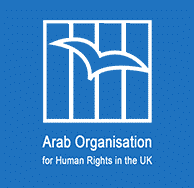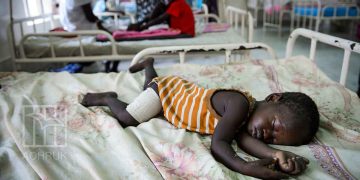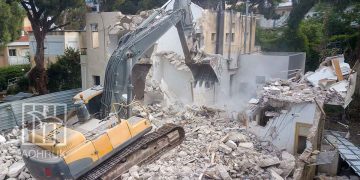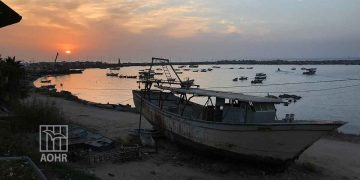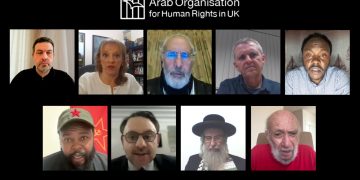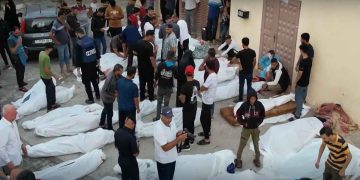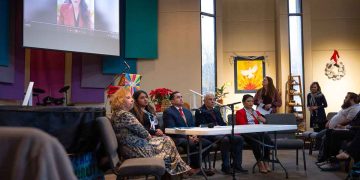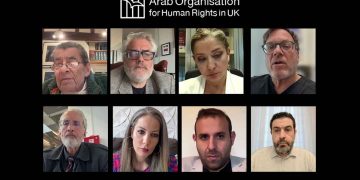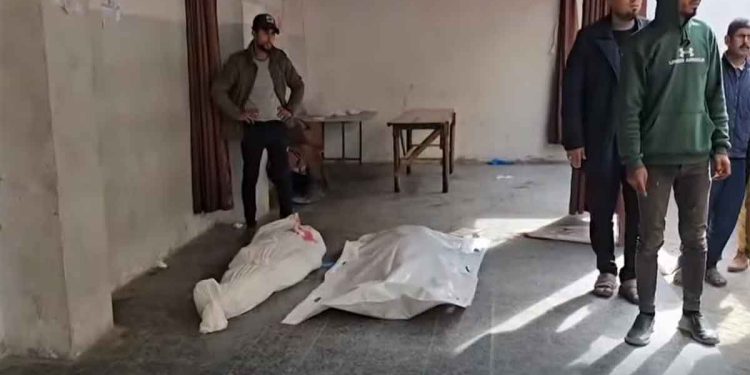In yet another chapter of the ongoing genocide waged by the Israeli occupation against the Gaza Strip for over six months, at least 32 Palestinians were killed in the past 24 hours, including members of two entire families, following airstrikes on tents sheltering displaced people across various areas of the enclave.
According to reports from Gaza’s Civil Defence and medical sources, the attacks were concentrated in displacement zones in Khan Younis, Rafah, Jabalia, and Beit Lahia. The bombings caused widespread destruction, fires in civilian tents, and numerous casualties, most of whom are women and children.
The Civil Defence reported that Israeli warplanes targeted tents for the displaced at the end of Al-Istabl Street in the Al-Mawasi area, west of Khan Younis, killing over 15 civilians, particularly women and children. Fires engulfed the tents, burning the bodies of the victims and the wounded.
In northern Gaza, a drone strike on a family tent in Jabalia killed the entire Asaliya family, including the mother, father, and their five children. In Beit Lahia, the family of Mohammad Al-Atal (Abu Anas) was also killed in a similar strike on their tent.
The assault extended beyond tents and homes to include the demolition of residential buildings in northern Rafah and artillery bombardment targeting eastern Gaza neighbourhoods, particularly Zeitoun and Shujaiya.
Israeli naval forces also opened fire along the coasts of Gaza and Nuseirat, while drones struck a civilian gathering east of Nuseirat refugee camp, killing one Palestinian and injuring several others.
Local sources described the attacks as indiscriminate and intense, with no distinction between military and civilian targets; an overt violation of the principles of proportionality and distinction outlined in the Geneva Conventions.
Since the resumption of Israeli military operations on 18 March, the Gaza Ministry of Health reports that 1,652 Palestinians have been killed and 4,391 wounded, the majority of whom are women and children. The total number of casualties since 7 October 2023 has surpassed 167,000 dead and injured, with more than 11,000 still missing, many trapped beneath rubble or unaccounted for in besieged areas.
Despite the scale of these figures and the harrowing scenes documented by aid workers and journalists on the ground, the international community remains paralysed, unable to take effective steps to halt the war or hold those responsible to account.
In addition to the ongoing massacres, Gaza’s population faces an escalating humanitarian catastrophe. The full blockade imposed by Israel for 18 years has intensified since March, with all border crossings shut and the entry of food, water, and medicine blocked—pushing the Strip into a state of famine.
Around 1.5 million Palestinians are now homeless, either because their homes have been destroyed or they have been forcibly displaced. Israeli policies appear aimed at depopulating Gaza of its indigenous inhabitants, echoing the 1948 Nakba, albeit with even greater brutality and under an international silence that turns a blind eye to what many consider the greatest humanitarian tragedy of the modern era.
This unfolding crisis cannot be separated from the political and military cover provided to the Israeli occupation by the United States, which continues to supply weapons, diplomatic support, and immunity in international forums. Meanwhile, the United Nations and the Security Council bear responsibility for their silence and failure to halt a crime that pauses only to resume again, claiming more lives of children and women.
In this grim reality, Gaza stands as a living testament to the failure of the international system to protect civilians, and to the world’s inability to restrain an occupying power that continues its campaign of killing and destruction without accountability or consequence.
